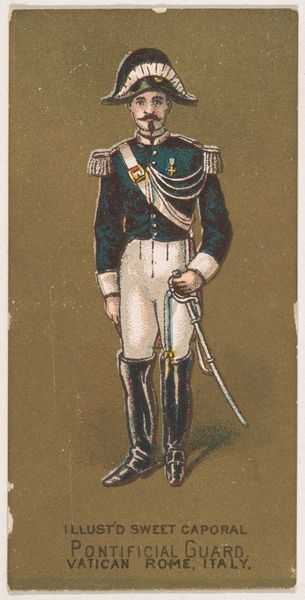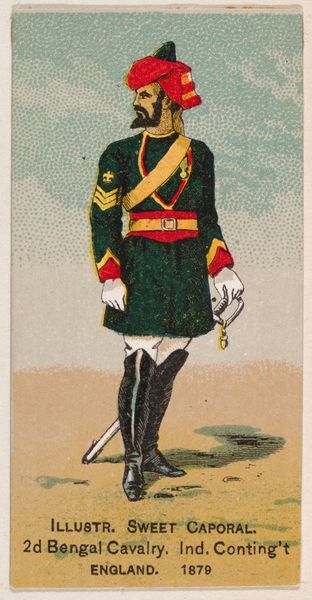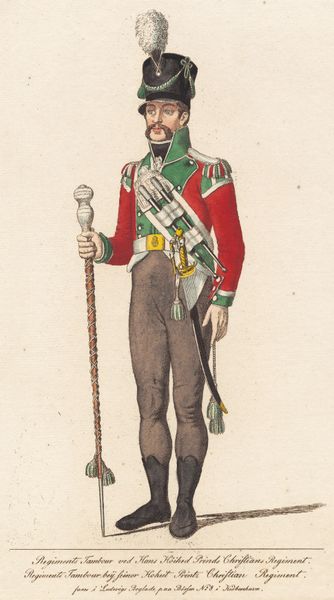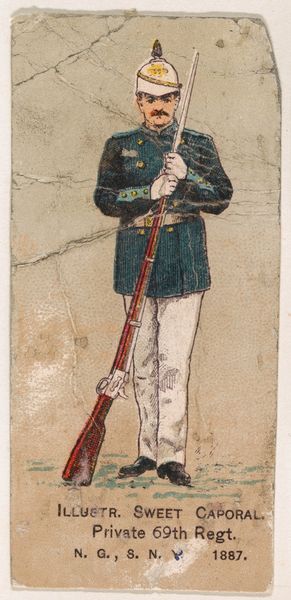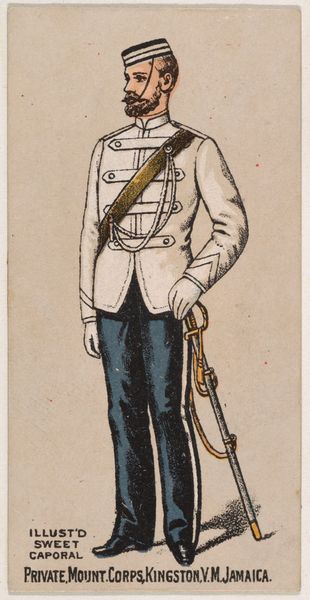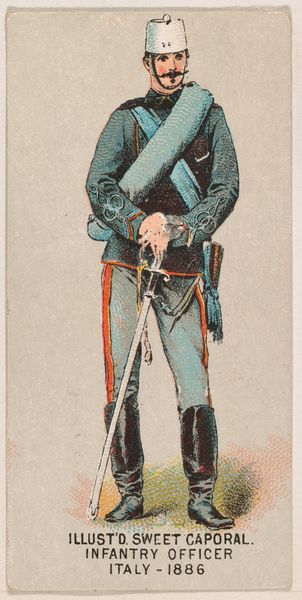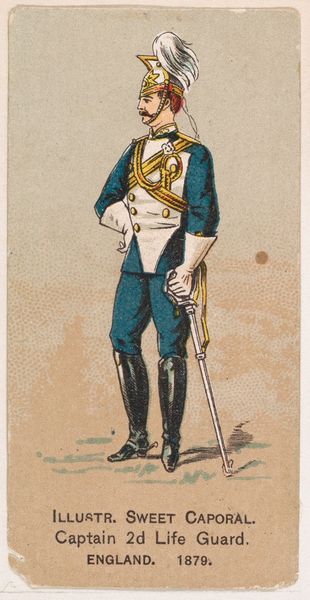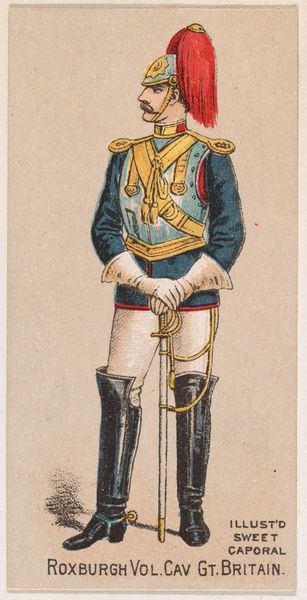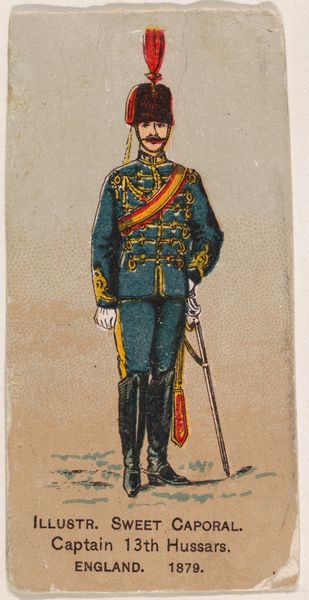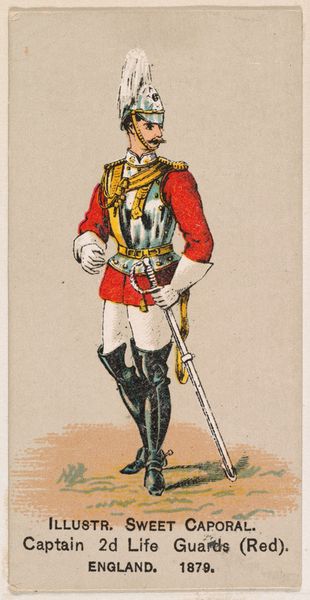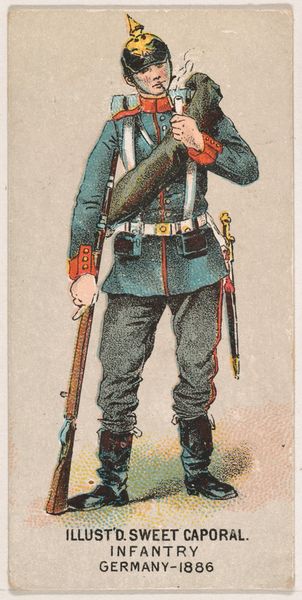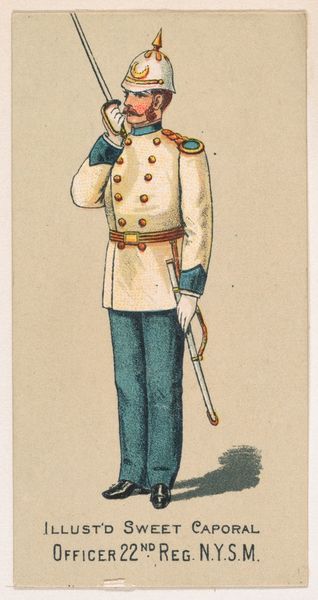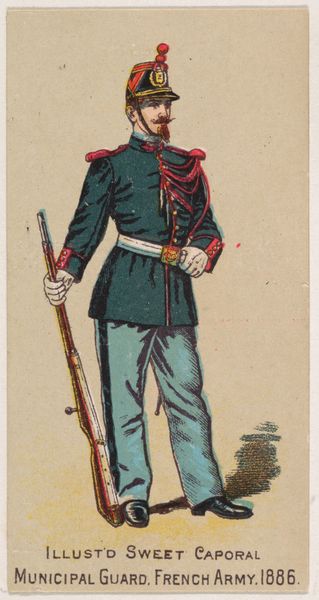
drawing, watercolor
#
portrait
#
drawing
#
toned paper
#
watercolor
#
watercolour illustration
#
history-painting
#
academic-art
#
portrait art
#
realism
Dimensions: 9 3/8 × 6 1/4 in. (23.81 × 15.88 cm) (sight)19 13/16 × 16 9/16 × 1 3/4 in. (50.32 × 42.07 × 4.45 cm) (outer frame)
Copyright: Public Domain
Curator: Before us we have "Study of a Dragoon" by Ernest Meissonier, dating back to around the 1870s. It's currently housed right here at the Minneapolis Institute of Art. Editor: My first impression is of meticulous detail; the textures are captivating, especially the fabric of the uniform against the warmth of that toned paper. It’s quite striking how the artist conveys the dragoon’s solemn stance. Curator: Absolutely, Meissonier was known for his dedication to historical accuracy. It’s important to understand the context here: the Franco-Prussian War had a profound impact on French national identity and art. He captured scenes from the Napoleonic era, but painted later in a period when French power was challenged, stoking some measure of nationalism and escapism, and, well, funding for artists portraying scenes that spoke to national identity was readily available, let's be real! Editor: From a formal perspective, I’m drawn to how Meissonier uses light and shadow to give shape and form. The watercolour medium really lends itself well to suggesting the light catching on the polished metal of his gear and buttons, don't you think? Curator: It does. But it’s more than mere illustration. The artist positions this lone dragoon as almost monumental. Remember, at the time, military prowess was deeply tied to the narrative of French greatness. And artists contributed to this visual narrative. Editor: Agreed. There’s a sort of subdued grandeur, a formal rigor even in what seems like a quick sketch. This isn't about bravado; it’s almost an analytical presentation of military readiness, a detailed rendering of the Dragoon himself as a formal construction. Curator: And remember that in its reception this meticulousness, was considered extremely French. It served to promote a vision of precision and historical attention which set French artists apart. He catered to that expectation to a large degree. Editor: I see how those sociopolitical dynamics give further nuance. So, while on one hand this could be an historical recreation, it's simultaneously a declaration of cultural power. Looking closely, the use of watercolour gives it a subdued affect, it’s not shouting for attention but quietly demands consideration. Curator: Precisely. It is history, technique, and subtle ideology rolled into one. Editor: I'm leaving with a deeper appreciation of the subtle political undertones embedded within what seemed to me, at first glance, to be purely a masterclass in technique. Curator: Indeed. It’s a testament to the idea that art can simultaneously be both aesthetic and an argument for something greater.
Comments
minneapolisinstituteofart almost 2 years ago
⋮
The French history painter Ernest Meissonier had a talent for military subjects, creating accurate reenactments of historic battles, particularly from the Napoleonic period. This drawing relates to two nearly identical paintings by the artist, a highly finished watercolor of 1874 (Yale University Art Gallery) and a large oil painting exhibited at the 1883 Salon (private collection). The paintings, titled The Guide, relate to the Napoleonic campaign in Germany in the fall of 1805 and depict a battalion of French dragoons (mounted cavalry) in the Black Forest led reluctantly by a local German peasant on foot. For such a complex multi-figured scene, Meissonier executed countless preparatory drawings—individual studies of every figure and horse in the composition. Here, with painstaking accuracy, he depicts the uniform of this dragoon— his elaborate brass helmet with horsehair, green coat, white breaches, tall black boots, slings and bundled cape—as well as his weapons—a saber and a musket. This serious, mustachioed soldier, a member of the 23rd regiment (identified by his satchel), is even shown wearing the yellow turnbacks and cuffs distinctive to this regiment.
Join the conversation
Join millions of artists and users on Artera today and experience the ultimate creative platform.
